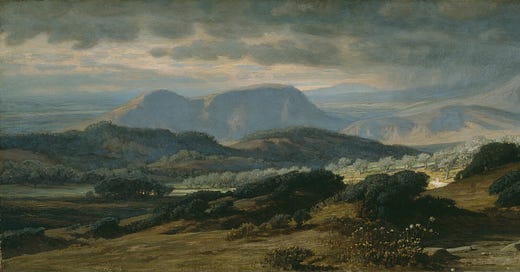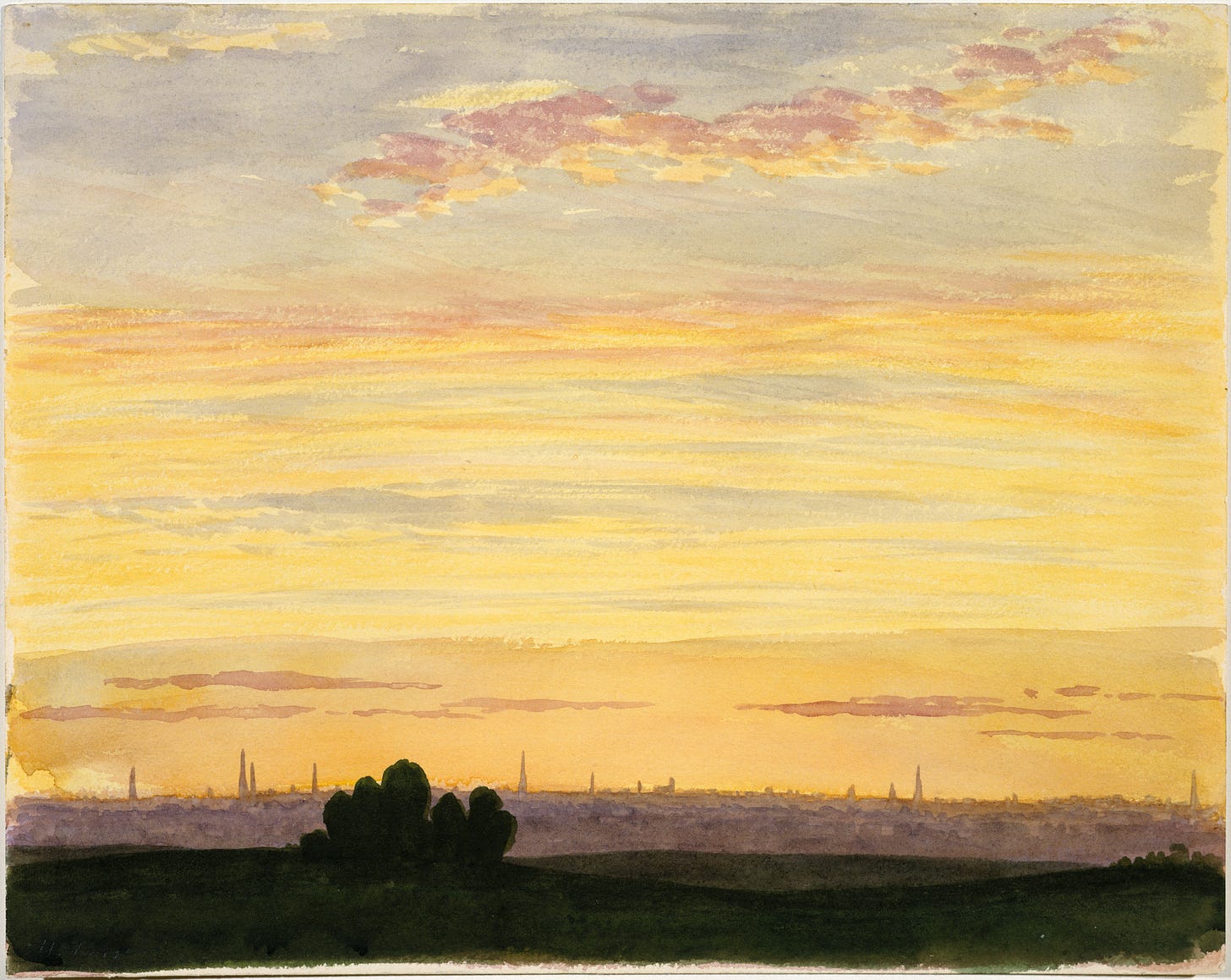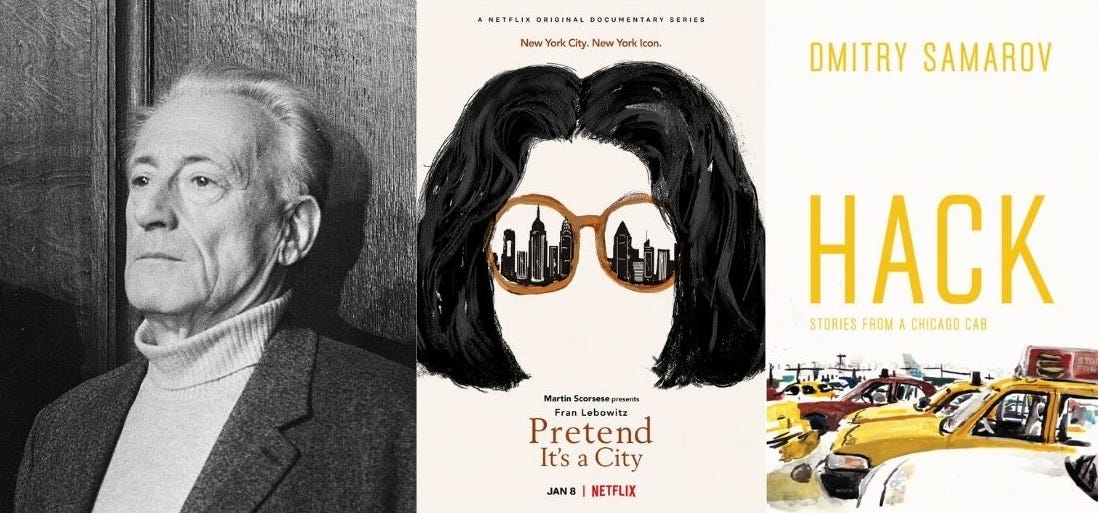Lately I’ve taken to working in places I have no reason to be. Though my office, the library, my house, and various coffee shops remain typical haunts, more and more I gravitate toward odd corners of the town and campus: a particular table in the engineering building I like for its view of the river, a desk in the brain sciences building beside a floor-to-ceiling mosaic, a hotel lobby where, so long as you walk in confidently and don’t make trouble, the concierge won’t say anything. The list goes on. Slowly I’ve abandoned the usual academic work spaces for these liminal ones—lobbies, waiting rooms, hallways. Any space with a table and chair (bonus points for a window, a power outlet, and a nearby bathroom) will do fine. At first I told myself these spaces were quieter (silence a desperate paradise for an introvert living with two teenagers), but I’ve realized that it’s not just physical silence I’m looking for. I want something closer to rest, or maybe peace, something the world around us clamors to deny.
Recently, Jonathan Haidt published this article about how smartphones are making parents more anxious. The ability to know—through Find My Phone and other apps—where a child is at all times makes us worry more, not less. In previous decades, Haidt points out, when a parent dropped their kids off at school, or soccer practice, or a friend’s house, they had to set down parenting for a while. Another adult was looking after things and, by force of sheer proximity, would be the one to intervene if a crisis arose. But just as smartphones allow our bosses to email us at 3:00 AM on a Saturday, they allow us to parent 24/7. We never get time off. We are always checking, monitoring, wondering. We never get to fully devote our attention to something else. I think this feeling of being constantly tethered encapsulates a lot of life in the 21st century. A smartphone means we never get to set any responsibility down. As a professor, I can receive emails from students at any time; as a parent, calls from kids who may be in an emergency but probably want a ride somewhere; as a citizen, news alerts from the other side of the country or the other side of the world.
In previous decades our responsibilities shifted with geography: at home we were parents, at work, professionals, at community meetings, citizens. But technology has forced us to bear the weight of all our roles simultaneously and without ceasing. Geography no longer constrains our responsibilities—to our detriment. In such a world, where could true rest possibly exist?
Perhaps in a hotel lobby.
Of course technology has always affected the way we move through and interact with the physical spaces around us. Airplanes reduced impassible mountains and oceans to faded landscapes seen through high windows. Telephones meant that conveying letters—of business, government, and longing—over miles and miles was no longer a central requirement of a functioning society. The way we experience space is always defined by what the philosopher Edward Soja called Firstspace (the physical realities, dimensions, and materials of a place) but also Secondspace (the social expectations and preconceptions that influence how we think about that place). Secondspace is what makes me look out at the glittering Las Vegas strip and see only the lights and crowds, rather than the equally present parking garages, back alleys, and dumpsters. I see what I’ve been taught to see, what I’ve been taught to expect. Secondspace is also what keeps me from laying out a picnic on the floor of the art museum, or taking a shower in a public park fountain. Through social conditioning, Secondspace constrains how we utilize our material environment. Often that conditioning runs so deep we don’t even register other ways of moving through and using the places we regularly inhabit.

When I began to gravitate toward lobbies and hallways, I was searching vaguely for “headspace,” “peace,” or even “freedom.” Soja would have called it Thirdpsace. He said that when we recognize both the material realities of our surroundings as well as how we are conditioned to use them, new possibilities open up. A table is not a table but a waist-high horizontal surface we have been conditioned to use for eating, but which could also be used to shelter under, sit on, or dance atop. Once we make a habit of seeing the world this way—not merely its simple materiality, nor its socialized uses but both those AND the possibilities afforded by them—new futures and freedoms open before us.
Often, when I come to the hotel lobby early each morning, the chic white walls and concrete floors glowing softly in the gray light, there is one other person there, a homeless man named Antoine who sits a few tables away, his wide, round eyes gazing out the window, his long-fingered hands folded over one knee. Sometimes he converses quietly with his own reflection, sometimes with me, his husky mezzo-soprano breaking into itermittent laughter. He talks about his brother, about the job he can’t find, about how he’d love to work but can’t stand selling his time to people up to no good.
“Yeah, that takes out a lot of jobs,” I say.
“Mmhmm, truth,” he nods, then stares out the window. We sit a while. Then he sighs and presses his palms into his thighs. “Well, see you round, girl.”
“Yeah, see ya.”
He goes across the street to pick up old bread the bakery is throwing out, then carries on downtown.
The homeless have a long tradition of participating in Thirdspace, using the world not as society dictates but as the material reality of a place affords. A church doorway is shelter. A bridge is shelter. The exhaust vents of the chemistry building are warmth. A hotel lobby is reprieve.
Reprieve for me too, of a different sort. If I turn off my phone and come to these places—these odd, liminal spots I have no logical reason to be—I regain the rest our postmodern life so often denies. Here no child will call wanting permission to go with this or that friend after school. No colleague will pass by and ask how this or that publication is going. No one knows where I am, and no one would think to look here. It’s just Antoine and I, using a space as it was not intended, watching the weather and the traffic go by.
Recommendations!
If you’re interested in some of the theories I referred to above, I recommend this article as an introduction to the work of Edward Soja’s predecessor, Henri Lefebvre. Lefebvre is the OG of what is generally called “postmodern geography,” and the article is a good and readable primer on Lefebvre’s major ideas about how society conditions us to think about and use space.
If you want some comedy over the coming holiday, I highly recommend Pretend It’s a City on Netflix. The show stars essayist and professional grump Fran Lebowitz, who published two best-selling books in 1980 and ‘81, then receded into the background of public life. In Pretend It’s a City, she appears with Martin Scorsese to reflect (unhappily and with much exacerbated wit) on how New York has changed since her youth.
If you want a book that embodies the melancholic alienation and brief, intense communions of modern cities, read Dimitri Samarov’s Hack. Samarov worked as a cab driver in Chicago for many years. The book is a series of vignettes from those long nights—full of loneliness, odd characters, and chance meetings. Samarov is a talented sketch artist, and some of his drawings are included in the collection. It’s an easy read and a good book to keep you company on dim winter evenings.







Fantastic, as always. Your brief interaction with the homeless guy lit up this piece brilliantly.